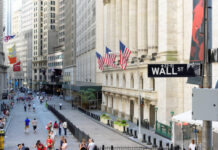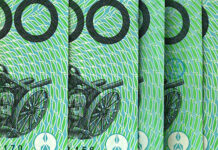Markets
Concerns about financial stability continued to ease yesterday. Risk-on after the CS rescue entered its second day, lifting equities in Europe about 1.5% higher. Main indices in the US rose by 0.7-1.3%. Core bond yields surged. Markets realized their central bank positioning was (and still is) too dovish given subsiding (at least for now) tail risk and still-high inflation. German yields soared 11.1 (30-y) to 25.6 bps (2y). European swap yields advanced by about half that. US rates skyrocketed 6.7 bps to 19 bps in a similar curve inversion deepener. The slight relative yield advantage combined with the bright mood gave the euro an edge over the dollar. EUR/USD took out the 1.0735 resistance level and closed at 1.0768. The narrative was different for sterling. With UK gilt yields adding a mere 5.4 bps at the front-end, GBP took a whammy against both the euro and the dollar despite being a risk-sensitive currency. EUR/GBP bounced off 0.8735 support (50% retracement March-Sep 2022 rally) to finish the day at 0.8814.
Asian stock markets eke out nice gains following the performance on WS. Japan outperforms, catching up with the rest after being closed yesterday. Bunds trade sideways, US Treasuries rise marginally. Cash yields in the country drops a few bps. It’s equally quiet on FX markets with the dollar, the euro and the Japanese yen all trading subdued. Markets are clearly in countdown mode. The ECB watchers conference kicks off with a ton of speakers scheduled. BuBa’s Nagel in an interview with the Financial Times already gave a glimpse of what to expect (see headline below). Focus later obviously then shifts to the Fed policy meeting tonight. US money markets add an 80% probability to the Fed hiking by 25 bps to 4.75-5%. Not only would this in current market thinking be the final hike, there are about three rate cuts priced in for the second half of this year. Investors assume financial stability is going to dominate monetary policy from tomorrow on. This in our view is grossly underestimating the Fed’s resolve to kill (sticky) inflation. It is pity indeed that the situation around First Republic Bank hasn’t been resolved ahead of the meeting. But we believe there are tools other than the policy rate that are more equipped to address any (liquidity) strains in the market should tensions build again. It is the approach the ECB followed last week Thursday and which we believe the Fed will adopt too. How much more tightening is being projected in the dot plot is the key question. But given current market positioning, yields especially at the short end of the curve have further upside scope. This may also call off the recent EUR/USD recovery. 1.068 serves as a first support, followed by the 1.06 big figure. Sterling investors are counting down to the Bank of England meeting tomorrow. UK February CPI numbers this morning delivered a nasty surprise, coming in at 10.4% headline and 6.2% core. Both are an unexpected acceleration from January. Rate hike coming up. EUR/GBP eases back below 0.88 in a first reaction.
News and views
German Bundesbank president Nagel in an interview with the Financial Times said that the central bank’s fight against inflation is not over. “If we were to tame this stubborn inflation, we will have to be even more stubborn”. There’s still some way to go (in hiking rates) and Nagel believes that they are approaching restrictive area. Once the policy rates hit peak levels, the central bank should resist calls to cut them as otherwise inflation could flare up again. The German central banker is also in favour of speeding up the balance sheet winddown when the council reviews the current €15bn/month in July. He remains bullish on the economy thanks to an extraordinarily robust labour market. In the wake of the recent Credit Suisse rescue, he argued that it’s way too early to say that the EMU is heading for a credit crunch which would choke demand.
The IMF and Ukrainian authorities have reached a staff-level agreement on a set of macroeconomic and financial policies that would be supported by a new 48-month Extended Fund Facility Arrangement. The $15.6bn EFF aims to support the Ukrainian authorities anchor policies that sustain fiscal, external, price and financial stability, and support the ongoing gradual economic recovery, while promoting long-term growth in the context of post-war reconstruction and Ukraine’s path to EU accession. The IMF has to approve changes to its lending rules to involve exogenous shocks that are beyond the control of country authorities and the reach of their economic policies, and which generate larger than usual tail risks. It’s their first loan to a country in war.













